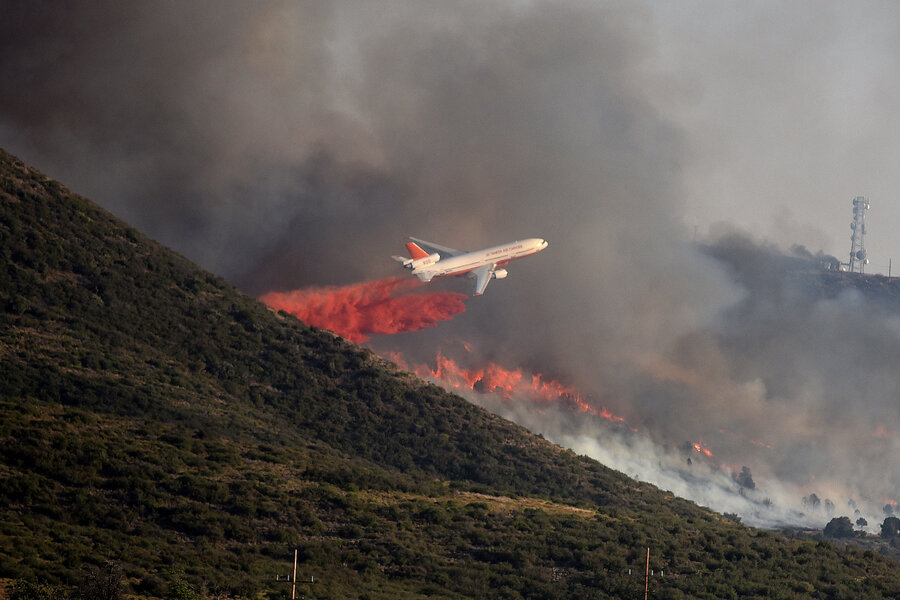Wildfire 2.0 in Arizona city where 19 hotshots died
Loading...
A wildfire roared into life on Wednesday afternoon in Arizona, threatening the same town that 19 firefighters died defending during a devastating fire in 2013.
Called the Tenderfoot fire, the wildfire started south of Yarnell on Wednesday afternoon and burned several hundred acres by 11 p.m. that night, according to the Arizona State Forestry. The return of a wildfire to the town that suffered the worst loss of life for Arizona firefighters since 9/11 – and its own destruction – is difficult for evacuees, many of whom live in homes rebuilt after the 2013 fire.
"We're praying our houses don't go again," Jane Sanderson told KPHO as she packed up her Yarnell home before evacuating. "We just want everybody to be safe and have our homes safe and trust that our firefighters will be safe also."
For her and many others living in fire-prone areas, preparations for a wildfire – clearing brush around the house, having important documents in an easy-to-reach "firebag," and keeping an evacuation plan – are part of life. Many recognize that such preparation is becoming more necessary, as studies consistently show that while the number of Western wildfires remains constant, their size and intensity is growing annually due to decades of brush build-up and drought.
"There has literally been an order-of-magnitude increase in the size of fires throughout the West, and in particular the occurrence of so-called mega-fires – those that burn a half a million acres or more, and used to be extremely rare, but are now becoming more common," Don Falk, a fire historian and professor at the University of Arizona's School of Natural Resources, told The Christian Science Monitor after the 2013 Yarnell fire.
The Tenderfoot fire is still half a mile from other buildings in the town, but 250 homes have been evacuated, with 200 evacuees heading for an evacuation center at Yavapai College in Prescott, KPHO reported.
Several agencies are responding to the fire on the ground and by air. The Arizona Forestry reported that it has sent 85 crew members to the area, and at least 140 firefighters have reached the scene in total, according to KPHO.
Original reports suggested the Tenderfoot fire would be small, about two acres, but high winds swept it into high gear, and it begun burning as much as 600 acres worth of grass and brush, dried by an early-June heat wave around the state, Scott Orr reported for the Prescott Daily Courier.
The weather may yet prove a boon to firefighters, however, for although Thursday is expected to be windy and warm, the National Weather Service reported a chance of rain on Friday.
Firefighters are using the nearby Highway 89, which has been shut down, as a natural fireline to stop the flames from moving further. A previous fire can also serve firefighters by clearing out the brush that feeds fires. This has made prescribed burns, along with mechanical reduction of foliage, a key part of preventative fire strategy.
"We have to do something to reduce the fuels," Dugger Hughes, a battalion chief for the Northwest Fire District in Tucson, Ariz., told the Monitor after the Yarnell fire.








